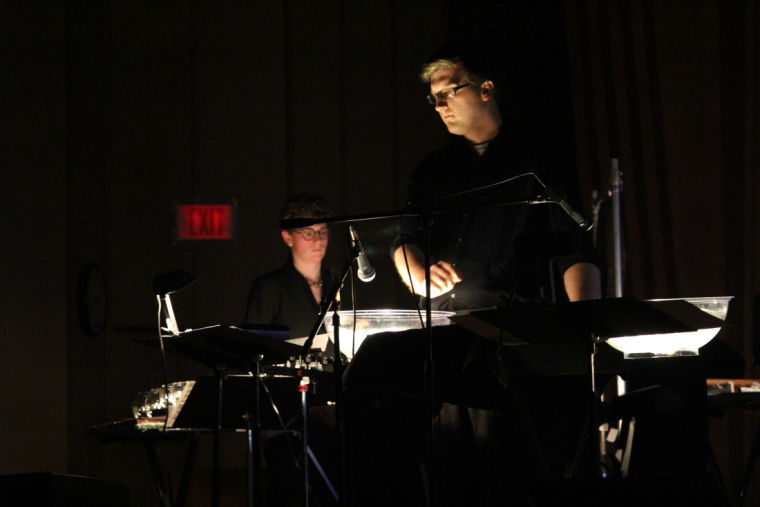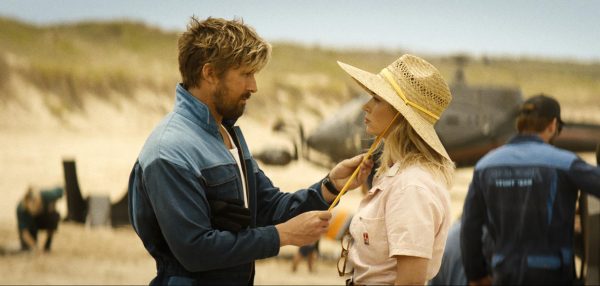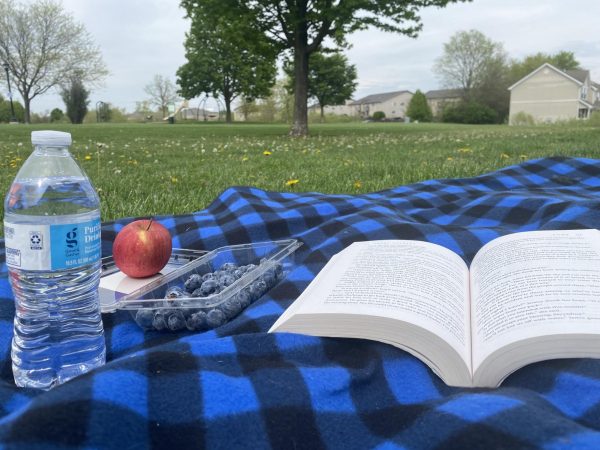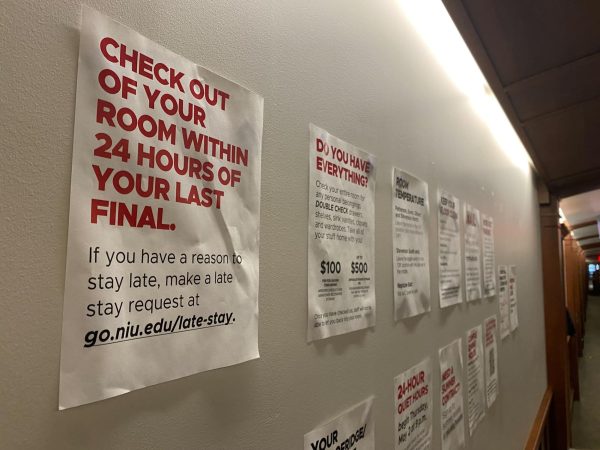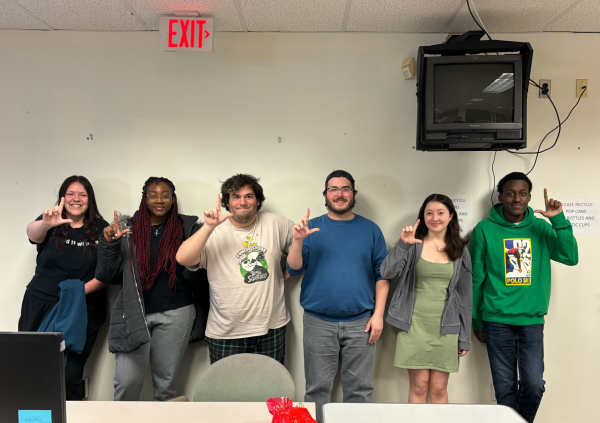Percussion quartet performs realistically ambient concert
School of Music members performed during the premiere of Jeff Herriott’s “The Stone Tapestry” Sunday at the Music Building’s Boutell Memorial Concert Hall. The ensemble implemented water droplet sound effects by dropping stones into bowls of water and ran projections of natural environments in the background.
January 27, 2014
DeKalb | Percussionists amplified nature-inspired pieces Sunday night.
Students attended the premiere of “The Stone Tapestry,” by Jeff Herriott at the Music Building’s Boutell Memorial Concert Hall.
After nearly 18 months in the making, the NIU percussion quartet and percussion/flute duo Due East performed the composition.
Most of the sounds created for the ensemble were amplified in tiny increments by percussionists dropping pebbles into water, scraping against a wooden board or playing mallets against gongs.
“I was thinking about different kind of gestures people could make and what kind of spaces they could make those gestures in,” Herriott said. “Think, ‘What’s expression?’ Exuberance, excitement or calling attention to something and yelling and saying, ‘Look at me!’ I think a lot [of] music is that, and it can be great, but my music tends to be more on the side that’s more stoic … I tend to write music that’s more flatter and ritualistic in nature, and so I was thinking about what kind of rituals could exist for performers.”
Projected images of water, stone walls, ice caverns and dark forests created an elemental theme behind the musicians. Anna Weisling provided the video set and Eric Appleton provided the stage and lighting.
“It was difficult to put this together because we weren’t sure what it was going to be until it came together,” said Greg Beyer, associate professor of percussion studies. “When you have a piece this long and this involved, the assembly process is very slow because we had never done it before. It revealed itself in very long strokes and in very gradual unfoldings and developments.
“It wasn’t a static kind of excitement, when it came. It was so big that it felt very fundamental somehow. When the whole thing came together … it was this very satisfying, deep feeling of ‘Oh, this is pretty incredible.’”
The musicians floated from piece to piece without any intermissions.
“Most of this was just logistics because the individual music is so simple and expansive that it wasn’t as intensive to put together,” said Chris Mrofcza, junior percussion performance major. “Probably the most challenging thing about playing music like this is trying to keep it interesting and people engaged over a long period of time because of how sparse it sounds. So playing it convincingly and confidently is the harder thing to do with music of this type.”



